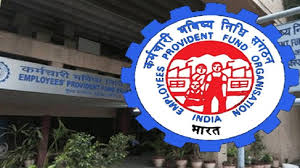Mukesh Ambani, the Chairman of Reliance Industries Ltd. (RIL), is stepping into a hitherto neglected field. He is eyeing a humble energy source, which has ranked low on the fuel hierarchy so far. RIL is in talks with sugar mill operators for supply of sugarcane press mud, a feedstock for the production of compressed biogas (CBG), ET has reported based on information from sources. It has reached out to large sugar mills which can supply thousands of tonnes of press mud to the company on a daily basis for its biogas plants, an executive aware of the development told ET, adding that RIL has reached out to companies operating sugar mills in different locations across the country. RIL did not immediately reply to an email seeking comment.
As green energy becomes the new frontier for energy producers, the humble biogas can emerge as a significant part of India’s clean energy mix. That’s why it is getting attention from industry big-wigs.
Read More: Interest Equalisation Scheme: Govt Approves Rs 2,500 Crore for of Subsidy Scheme Till June 2024
The race for biogas
In September, Ambani had announced plans to set up 100 CBG plants over the next five years. Adani Group’s Adani Total Gas is planning to set up five CBG plants in the next five years with more to follow in future. Jio-BP, a fuel retail joint venture between RIL and British oil major BP, plans to retail CBG and bio-CNG (B-CNG), both of which can be used in place of compressed natural gas in CNG-powered vehicles.
Pune-based Thermax has joined hands with EverEnviro Resource Management to establish Thermax Bioenergy Solutions to set up bio-CNG projects. According to industry sources EverEnviro alone has planned an investment of nearly Rs 10,000 crore in the segment over the next few years. EverEnviro’s wholly owned subsidiary Green Growth Equity Fund (GGEF), is planning to set up 14 CBG plants in the country.
Oil marketing companies aren’t far behind. Indian Oil Corporation, Hindustan Petroleum Corporation and Bharat Petroleum Corporation have issued hundreds of letters of intents for setting up CBG plants. Indian Oil Corporation, India’s largest refiner and marketer, has commissioned 22 CBG plants so far under the government’s Sustainable Alternative Towards Affordable Transportation (SATAT) initiative launched in 2018 to boost the availability of biogas. Gail has decided to insert CBG into the city gas grid. An added advantage for these energy companies is that CBG can also be used to produce green hydrogen.
Read More: EV Charging: Bharat Petroleum, Tatas Sign Pact To Set Up 7K Charging Points
Why biogas is important for India?
Biogas can improve India’s energy security, as the country is currently heavily reliant on imported natural gas to meet its energy needs. The proposed 5 per cent blending of biogas with natural gas supplies in the country can cut LNG imports worth $1.17 billion annually, says a study by the Indian Biogas Association (IBA).
The study comes against the backdrop of the government’s recent mandate to blend one per cent biogas with piped natural gas (PNG) supplies in the country from April 1, 2025 under the compressed biogas blending obligation (CBO) scheme. The biogas blending is proposed to be further increased to 5 per cent by fiscal year 2028–29.
This blending initiative gels well with the government’s macro-level move to make India a gas-based economy, with a target to increase the current share of gas in the energy mix from 6 per cent currently to 15 per cent by 2030, as per the study.
While the targeted 5 per cent blending of biogas with natural gas can reduce LNG imports worth $1.17 billion, thsi can also bring down per capita CO2 emissions by 2 per cent, benchmarked to the 2019 figure, which was 1.9 metric tonne of CO2 per person in India. Additionally, the body says preventing organic waste going to landfills can bring innumerable benefits.
The mandatory CNG blending will encourage investment of around Rs 37,500 crore and facilitate the establishment of at least 750 compressed bio gas (CBG) projects by 2028–29, as per government estimates.
Read More: From bills to booking travel tickets – Do more with Paytm’s all-in-one app
Biogas can be produced from various organic waste sources, such as agricultural waste (including the stubble which is burnt by farmers and is a major cause of pollution in the national capital in winters) , municipal solid waste, and food waste. This can create new economic opportunities for farmers, waste management companies, and other stakeholders involved in biogas production.
Replacing natural gas consumption with biogas and biomethane incrementally to 20 per cent by 2030 can help India cut liquefied natural gas import bills by $29 billion between financial years 2025 and 2030, as per another recent report, by the Institute for Energy Economics and Financial Analysis (IEEFA)
Despite its evident advantages, biogas hasn’t gained substantial traction in India. The report suggests that the primary obstacles are an underdeveloped market ecosystem for pricing and offtake, convoluted clearance and permission procedures for project inception, and fragmented government support mechanisms.
Highlighting recent government initiatives, the report’s author Purva Jain said, “The government has started fix some of these gaps. In 2021, the government bundled different types of assistance under the National Bioenergy Scheme. Moreover, the introduction of the GOBARdhan (Galvanizing Organic Bio-Agro Resources Dhan) scheme as an umbrella initiative of the Government of India will help in this consolidation. It covers the entire gamut of schemes/policies promoting organic waste conversion to biogas or compressed biogas (CBG).”
What has made biogas attractive for private comoanies is the technical, financial and social aspects. “The technology is now getting mature, so people can now set up large scale biogas plant,” Gaurav Kedia, the IBA Chairman, told ET recently. “On the financial front, there’s not only support from the government’s end but also availability of a ready market to pull the gas.” Kedia said that organic fertiliser from these plants is finding many takers specially after the Covid-19 pandemic, which made people very health conscious. “So, the overall scenario makes it very lucrative right now.”
(With inputs from PTI)





































